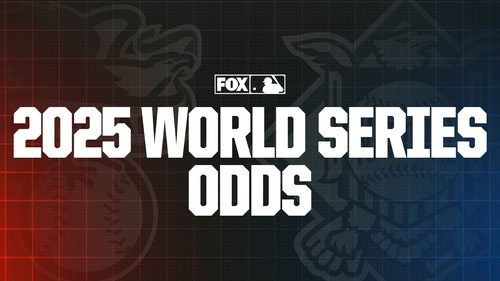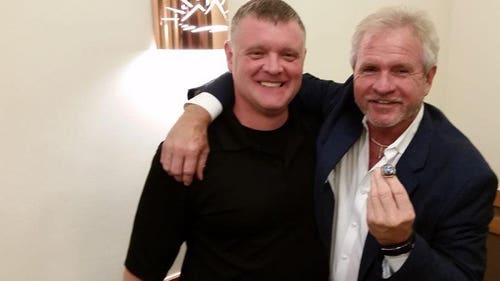
In Corey Kluber, Red Sox get strike-throwing workhorse, if not more
To call the end of Corey Kluber’s 2022 season unceremonious would be putting it gently.
With the Guardians and Rays trading zeroes deep into extra innings of Game 2 of their AL wild-card series, both bullpens were wearing thin. Originally slated as a strong candidate to start Game 3, Kluber was pressed into action in the 13th inning of Game 2, entering in relief for the first time since 2013. He stranded a runner in the 13th and sat down Cleveland’s 2-3-4 hitters in order in the 14th.
Then, to lead off the 15th, Kluber hung a 1-0 slider to Guardians rookie outfielder Oscar Gonzalez:
Game over. Season over. The same Cleveland fans who had cheered him so lovingly at his peak was going ballistic over his downfall. It was nothing personal, of course — simply a cruel and unusual script in which their team advanced at the expense of their former hero. Baseball will do that sometimes.
Less than three months after walking off the Progressive Field mound in defeat, Kluber has signed a one-year, $10 million deal with the Red Sox. It makes plenty of sense for a Boston team seeking to fortify its rotation, one that had significant interest in the veteran righty in the past two offseasons. It’s also a nice landing spot for Kluber, who has raised his family in nearby Winchester since 2016. As he enters his late 30s, what can Red Sox fans expect from the accomplished right-hander?
From 2014-2018, only one pitcher (Max Scherzer) made more regular-season starts than Kluber’s 160. From 2019-2021, 184 pitchers made more regular-season starts than Kluber’s 24. He suffered a fractured arm on a comebacker early in his final year with Cleveland in 2019, and then shoulder trouble limited him to just one outing with Texas in 2020 and 16 starts with the Yankees in 2021.
It was this troubling trend that prompted the Rays to give Kluber such an incentive-heavy contract entering 2022 — a one-year, $8 million pact with up to $5 million in incentives based on several games-started thresholds, demonstrating a strong belief in Kluber’s talent, if he were able to stay on the field.
Kluber responded accordingly, making 31 starts and not spending a day on the IL. His fully healthy 2022 was a refreshing reminder of the durable workhorse he once was, as we could once again count on seeing Kluber take the mound every fifth day. However, a return to durability didn’t exactly come with a return to dominance. His 4.34 ERA was a park-adjusted 16% worse than league average, and he struck out 7.6 hitters per nine innings, a career low and a far cry from the 11.7 mark of his 2017 peak. Though he was never a full-blown flamethrower and his average fastball velocity had begun declining even before the injuries, his heater now sits around 89 mph, the third-slowest among qualified starting pitchers.
The Kluber we see now — the one turning 37 in April — is considerably different from the one who established residency atop AL Cy Young ballots during his prime. The superhuman story of Justin Verlander chucking high-90s heat into his quadragenarian years has clouded our perception of what is a much more normal transition for pitchers like Kluber as they get older. As fun as it is to watch the likes of Verlander continue to dominate with the same kind of arsenal he had in his 20s, it can also be fascinating to see the Klubers, Johnny Cuetos, Zack Greinkes or Adam Wainwrights of the league figure out a new way to get batters out.
The strikeout totals may never return to where they used to be for Kluber, but the most encouraging part of his 2022 was the rediscovery of his elite ability to avoid free passes. Though he did show flashes of excellence during his injury-abbreviated year with the Yankees in 2021 — including a no-hitter, of course — his command barely resembled that of a pitcher that had led the league in walks per nine innings (BB/9) in both 2017-2018. In 2022, however, Kluber again posted a league-best — and career-best — 3% walk rate, with just 21 bases on balls allowed over 164 innings. That figure becomes even more impressive when you realize that Kluber walked four batters in his first start of the year on April 10, but never walked more than two again (which he only did twice) in any of his 30 starts for the rest of the season.
In addition to limiting free bases, Kluber also enticed opposing batters to swing at a career-high 38.8% of pitches he threw out of the strike zone, which was also third-best among starters behind splitter specialist Kevin Gausman and All-Star Tyler Anderson. Kluber’s 29.7% called strike plus whiff percentage (CSW%) was tied with Kyle Wright for 12th among qualified starting pitchers, a far better mark than one might expect if you looked simply at strikeouts and ERA.
Strikeouts will always be sexier, but this new version of Kluber paints a picture of a professional pitcher in every sense, constantly developing new crafty sequences to keep hitters off-kilter. His limited raw stuff might get hit a lot harder and more often than it used to, but that doesn’t mean Kluber can’t still deliver quality starts with regularity.
He may not offer the same upside of some other free-agent starters who were available, but Kluber does offer a degree of certainty that this Red Sox rotation desperately craves. With 69 combined starts between Michael Wacha, Rich Hill and Nathan Eovaldi out the door via free agency, the only returning starter with any sizable 2022 workload is Nick Pivetta. Before Kluber, Boston was gearing up to count on Chris Sale and James Paxton, who have combined for 70 innings pitched over the past three seasons, not to mention younger arms like Garrett Whitlock and Brayan Bello, neither of whom has spent a full big-league season in a rotation.
As the role of starting pitching in MLB has evolved rapidly over the past decade, it hasn’t just been the innings totals that have shrunk dramatically by teams’ unwillingness to let starting pitchers go deep into games. Starters have also become far less durable over the course of a full season, let alone within each individual start. Just as the 200-inning starter has become increasingly rare — only eight pitchers reached the threshold in 2022 — a pitcher making 30-plus starts is also now far harder to come by. Just 43 different pitchers made at least 30 starts in 2022, up slightly from 41 in 2021, which was the lowest mark in a 162-game season since 1967.
Kluber, even after three consecutive injury-riddled seasons, was one of the 43 to make 30-plus starts in 2022. For the past few years, teams targeting Kluber appeared to be pursuing the "what-if" potential of him rediscovering the Cy Young version of himself. In signing Kluber entering 2023, the Red Sox instead seem to be opting for a different profile — one of durability and reliability, something many teams are seeking nowadays but especially one with the makeup of Boston’s pitching staff. If he can again deliver 30-plus starts, he’ll more than likely have fulfilled the workhorse role the Red Sox are likely envisioning him in. And if Kluber’s ace form resurfaces for any amount of time in his age-37 season, that will be gravy.
Top stories from FOX Sports:
- 2022-23 NFL playoff picture: Which teams are in, who's still in the hunt
- Eagles, Vikings stall; Giants clinch playoff spot: 3 up, 3 down in Week 17
- Never, ever count out Aaron Rodgers
- Geno Smith leads Seahawks to runaway victory over Jets, keeping playoff hopes alive
- Bucs' season of furious comebacks leads to NFC South title, playoff berth
- Why MLB teams are signing stars to deals of over 10 years again
- MLB free agency tracker: Signings, best players available
- NBA Debate: Is Luka Doncic the new MVP frontrunner?
- TCU's fairy tale run vs. the Georgia dynasty: A fitting end to an impeccable season
- How Pele brought the beautiful game to the United States
- CFP title game: Early odds for Georgia vs. TCU
Jordan Shusterman is half of @CespedesBBQ and a baseball writer for FOX Sports. He has covered baseball for his entire adult life, most notably for MLB.com, DAZN and The Ringer. He's a Mariners fan living in the Eastern Time Zone, which means he loves a good 10 p.m. first pitch. You can follow him on Twitter @j_shusterman_.










